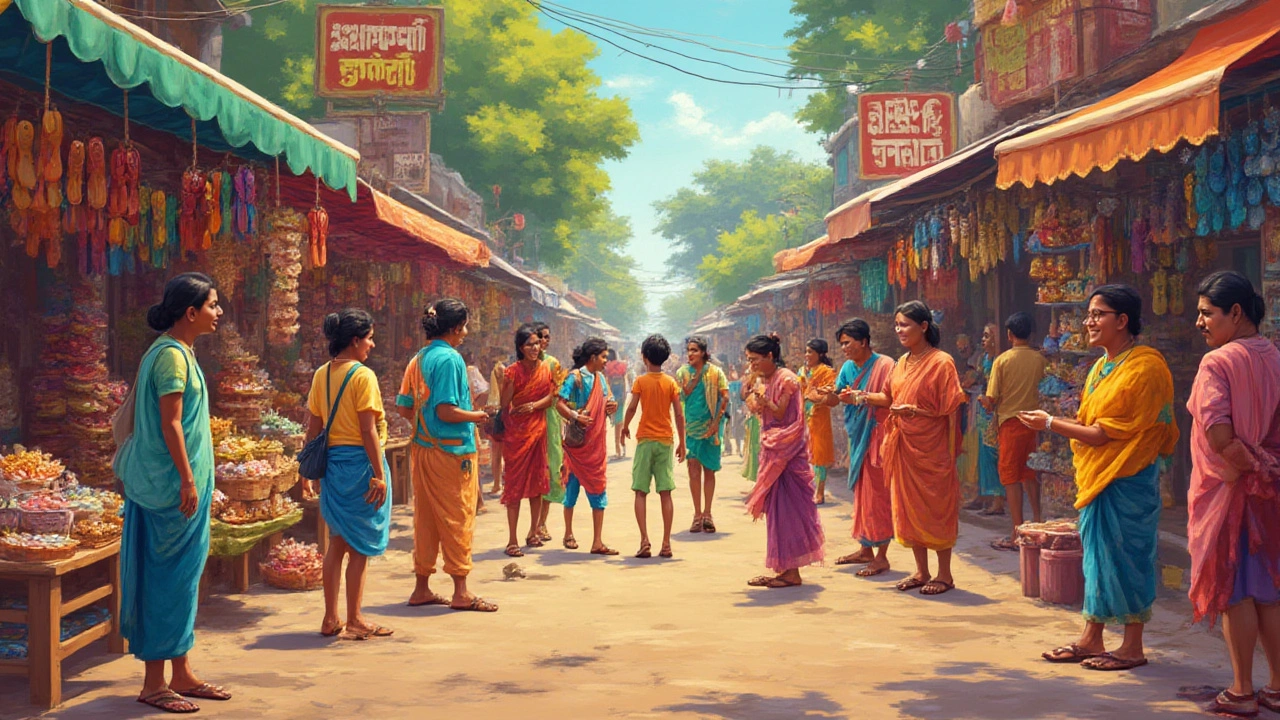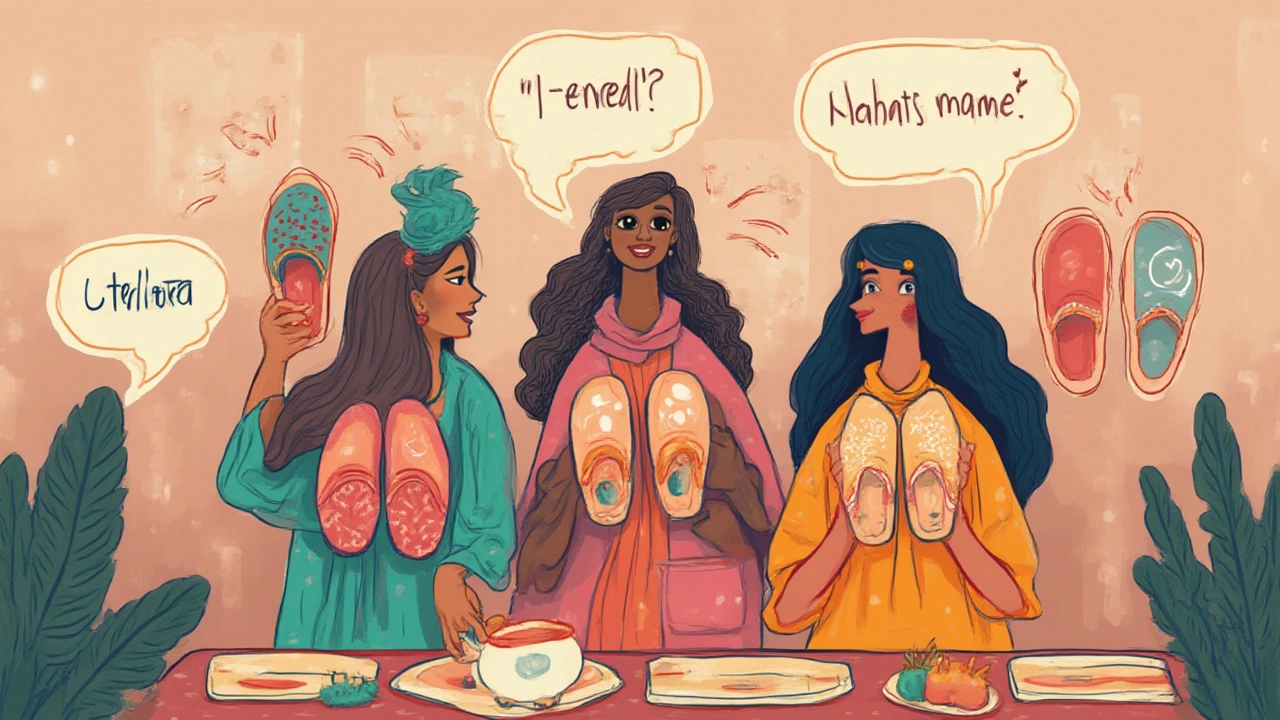Chinese Names for Slippers: Cultural Insights and Everyday Use

Ever wondered what someone in Beijing or Shanghai calls those comfy things you slide on when you get home? Turns out, there's more than one way Chinese people talk about slippers, and the story goes a lot deeper than language lessons let on. Slippers, believe it or not, have their own cultural moment in China, from practical uses to symbols of home life. And, yes, if you say "slippers" at a Chinese store, you might get puzzled looks unless you know the right word. This isn’t just about translation—it’s about everyday habits, funny cultural slip-ups, and learning the words that take you further than the guidebooks ever will.
The Most Common Chinese Words for Slippers
In mainland China, if you walk into a friend’s house, one of the first things they’ll ask is if you’d like some 拖鞋 (tuōxié). This is, by far, the most widespread Chinese word for slippers, pronounced “twaw-shyeah.” The first character 拖 (tuō) means “to drag” or “to slip on,” while 鞋 (xié) just means “shoes.” Together, it literally means, “the shoes you slip on”—pretty natural, right?
But China’s a big place, and language is rarely that tidy. In Cantonese-speaking areas like Hong Kong and some cities in Guangdong province, folks usually say 拖鞋, too, but the pronunciation shifts to “toh-haai.” Different sound, same meaning. Don’t get thrown if you hear slang like “slippers” in English mixed into casual Cantonese either! Young people, especially in bigger cities, love code-switching between languages, so you might hear “si mi pa” (from Singaporean Hokkien), or the straight-up English word “slippers” in a fashion context.
Here’s something most textbooks skip: special types of slippers also get their own words. “浴室拖鞋” (yùshì tuōxié) refers to bathroom slippers (that’s the pair you’ll see in showers at gyms or dorm halls). For the kind worn in public showers or at pools, you might hear 人字拖 (rénzì tuō), which literally means “human character slippers” because the strap forms the Chinese character for “person.” That’s right—these are what English speakers think of as flip flops.
To really clear things up, check out this data table showing common words by region and purpose:
| Chinese | Pinyin | English Meaning | Used In |
|---|---|---|---|
| 拖鞋 | tuōxié | Slippers | Mainland China, Taiwan, HK |
| 人字拖 | rénzì tuō | Flip-flops | Mainland South, Summer Wear |
| 浴室拖鞋 | yùshì tuōxié | Bathroom slippers | Hotels, Gyms |
| 棉拖鞋 | mián tuōxié | Cotton (winter) slippers | Homes, Winter |
So, if you want to buy “indoor slippers” online, search for 室内拖鞋 (shìnèi tuōxié); for summer gel slides, try 夏季拖鞋 (xiàjì tuōxié). One form fits all? Not really. Nuance is the name of the game.

Cultural Habits Around Slippers in China
Knowing the word is just part of the story. Imagine you’re invited to a Chinese home—don’t even think about walking past the entrance with your street shoes on. Slippers are a must, and usually, a whole basket of them sits by the doorway. In surveys from major Chinese cities, 92% of urban households said they require guests to change into indoor slippers. Some even keep new plastic-wrapped pairs for visitors. It’s about cleanliness, but also comfort and hospitality. You never want your guest’s feet to feel cold or dirty, right?
This isn’t just family tradition—it’s everywhere. Staff at offices, after-hours coworkers at the tech company, workers at rural tea houses—everyone ditches the street shoes indoors. In the north, you might spot plush, thick “mián tuōxié” for the winter chill. In the hot south, lightweight woven bamboo or even simple flip-flops keep things cool. Hotels, gyms, and spas? All hand out single-use “yùshì tuōxié.” Even in children’s kindergartens, teachers remind kids every day to swap to their “indoor slippers.”
But here’s a quirk: slippers aren’t just for comfort. There’s folklore that wearing slippers at home protects you from demons trying to follow your footprints. In old Chinese stories, spirits track dirty shoes, so leaving them at the door keeps trouble at bay. Superstition or not, no guest wants to get side-eyed for ignoring the house rules. And did you know slippers show up in Chinese comedy? Let’s just say, angry moms in dramas often threaten a misbehaving kid with a flying slipper.
If you give slippers as a gift, though, be careful. They’re practical, yes, but Chinese culture sometimes considers it “sending someone away” or even cutting ties—unless you share a close, cozy relationship. Valentine’s Day? Sure, slippers for your significant other are spot-on, but maybe skip them for your boss.

Shopping for Slippers in China—Tips and Local Secrets
Walking into a Chinese store—a tiny shop in a winding alley or a massive mall—can make your head spin with choices. You’ll see aisles stacked with slippers: cotton-lined, straw, memory foam, cartoon print, anti-slip, even extra-wide sizes for Grandpa. Whether you’re shopping online on Taobao or JD.com, or in-person, filtering the right word will make or break your search. Use 拖鞋 as your main search, but be ready to add keywords: 室内 for “indoor,” 浴室 for “bathroom,” 孩子 for “kids,” 男 or 女 for “men” or “women.”
Prices are all over the map. Budget pairs can cost as little as 10 yuan (about $1.40 USD), while premium ones—think imported Japanese brands or luxury animal-print mules—shoot up to hundreds of yuan. If you see “棉拖鞋” (cotton slippers) in winter, give them a try—these are warm, squishy, perfect for cold tile floors. For a summery feel, look for “草编拖鞋” (straw-woven slippers). By the way, didn’t expect tech in your slippers? Some high-end brands now market “anti-bacterial” or “orthopedic” options labeled 抗菌 (kàngjūn) and 矫形 (jiǎoxíng).
It’s easy to get overwhelmed by choices, so here’s a quick list for shopping smart:
- Know your materials—棉/cotton for winter, 草/straw for summer,